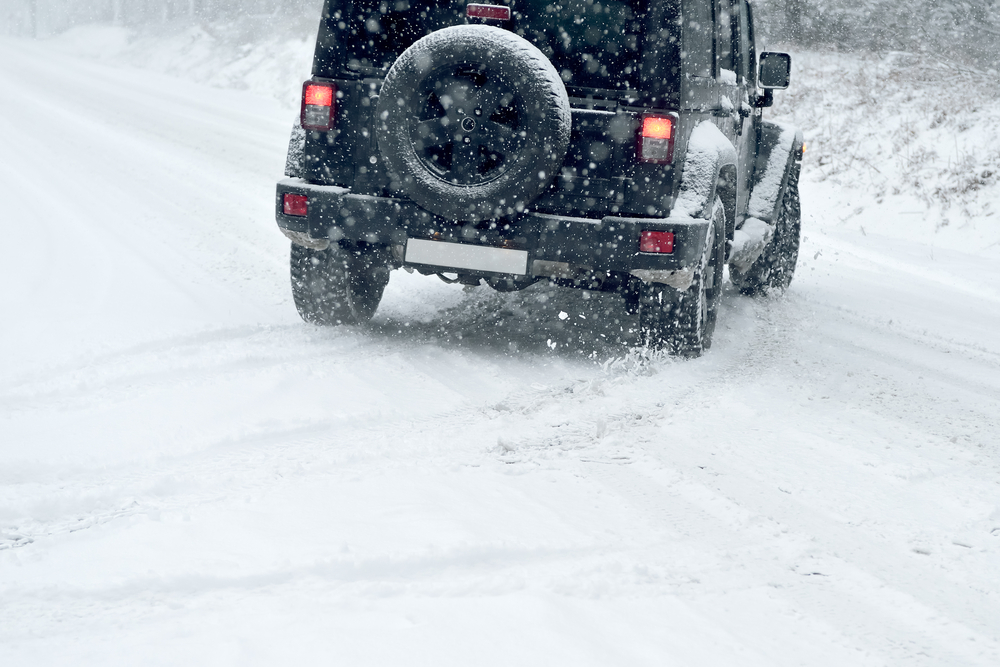The Local newsletter is your free, daily guide to life in Colorado. For locals, by locals.
Let’s face it—driving in sleet and snow is simply not as easy as driving when the day is all clear skies and perfect conditions. In Denver, the shift from summer to winter can mean gorgeous, sunny days or freezing temps and scattered snowstorms. So, when it comes to driving, it’s best to be prepared for anything.
“Driving in winter can be dangerous for numerous reasons,” says Jordan Perch of DMV.com. “There are many potential safety hazards that drivers can face during the winter months—such as slippery roads and limited visibility—which increase the risk of getting into an accident. That’s why drivers need to exercise caution and practice defensive driving, trying to stay alert and in control at all times.” To help you stay safe on the road this season, we grilled Perch and other driving experts on the ins and outs of driving in winter conditions.

Step 1: Get Your Car Checked
The first thing you should be doing to prepare for winter driving is getting your car a check up. In fact, failing to complete preventative maintenance ahead of cold weather months is the number one thing Cliff Wood, executive vice president of stores for CarMax, the largest used-car retailer in the U.S., says he sees people do wrong during winter months. “Since winter weather can expose problems that drivers often overlook, preventative maintenance such as checking antifreeze, wiper blades, tire pressure and tire treads is a must-do,” he says. Speaking of tires, “a great way to determine if your tires are safe enough to hit the road is by checking the tread depth,” Wood adds. “You can check that by putting a penny headfirst between the treads. If you can see the top of Lincoln’s hair, it’s time to replace the tire.”
(Read more: How to Prep Your Car for Winter)
Step 2: Reduce Your Speed and Brake Slowly
It’s a common-sense practice that bears repeating: when conditions are poor, drive slower. “When driving in snow or on icy roads, there is a great risk of skidding and losing control of the vehicle due to reduced traction,” says Perch. “Chances of skidding are even higher if you are driving fast, and if you brake or accelerate harshly. That’s why drivers have to reduce their speed when driving in winter conditions, preferably well below the posted speed limits.” The same goes for taking curves. Perch recommends drivers slow down well ahead of time and enter curves at a significantly reduced speed to avoid spinning.
Remember here that the type of car you’re driving won’t actually help you stop faster, either. “Many people feel safer driving in an all-wheel or four-wheel drive, but your vehicle isn’t going to stop any faster,” says Brad Pellman of Boulder’s Pellman’s Automotive, a full-service auto repair shop. “Watch your speed, and always be prepared to stop or take evasive action on slippery roads.”
Step 3: Increase Your Following Distance
Stopping on snow-covered or icy roads is more difficult because of low traction, so drivers should leave more space between their car and the vehicles in front of them. “This provides enough time and space to brake without skidding if another vehicle stops abruptly,” says Perch. “Experts warn that drivers need as much as 10 times the normal stopping distance in order to brake on a slippery road without losing control of the vehicle.”
Step 4: Remove Your Car From Snow Carefully
Many drivers instinctively feel the need to lay on the gas to get their stuck car out of the snow, but that doesn’t help. In fact, it will only dig the car in even deeper, says Perch. “Drivers should avoid revving the engine and spinning the tires, and try to rock the car by slowly backing up and moving forward,” he says. “This is the best way for the car to gain some traction and get out of the rut eventually.”
At the end of the day, if you’re too worried about the conditions to pay attention to the way you’re actually driving, it might be better to stay home when bad weather hits. “Be patient, take your time, and always be prepared,” says Pellman, “but if you don’t have to drive in bad weather, stay home until the roads are clean.”








